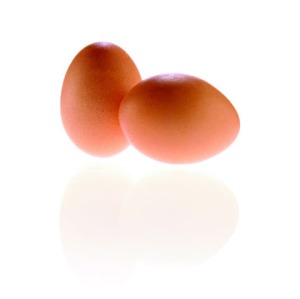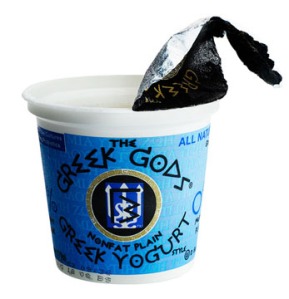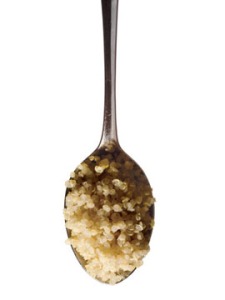10 Foods for a HEALHIER Life
They’re among the planet’s most perfect foods, capable not just of helping you boost metabolism and melt fat, but also fight disease, lower cholesterol, stabilize blood sugar, and live a longer, better life. And did we mention that they’re delicious? Make it your goal to work these edible all-stars into your diet every day.
10. Eggs:
When it comes to breakfast, you can’t beat eggs. At a cost of only 72 calories, each large egg holds 6.3 grams of high-quality protein and a powerhouse load of vital nutrients. A study published in the International Journal of Obesity found that people who replace carbohydrates with eggs for breakfast lose weight 65 percent quicker. Researchers in Michigan were able to determine that people who regularly eat eggs enjoyed more vitamins and minerals in their diets than those who ate few or no eggs. By examining surveys from more than 25,000 people, the researchers found that people consuming eggs were about half as likely to be deficient in vitamin B12, 24 percent less likely to be deficient in vitamin A, and 36 percent less likely to be deficient in vitamin E. And here’s something more shocking: Those who ate at least four eggs a week had significantly lower cholesterol levels than those who ate fewer than one. Turns out the dietary cholesterol in the yolk has little impact on your serum cholesterol.
Substitutes: Egg Beaters egg substitute
9. Green Tea:
Literally hundreds of studies have been carried out to document the health benefits of catechins, the group of antioxidants concentrated in the leaves of tea plants. Among the most startling studies was one published by the American Medical Association in 2006. The study followed more than 40,000 Japanese adults for a decade, and at the 7-year follow-up, those who had been drinking five or more cups of tea per day were 26 percent less likely to die of any cause compared with those who averaged less than a cup. Looking for more immediate results? Another Japanese study broke participants into two groups, only one of which was put on a catechin-rich green-tea diet. At the end of 12 weeks, the green-tea group had achieved significantly smaller body weights and waistlines than those in the control group. Why? Because researchers believe that catechins are effective at boosting metabolism.
Substitutes: Yerba mate, white tea, oolong tea, rooibos (red) tea
8. Garlic:
Allicin, an antibacterial and antifungal compound, is the steam engine pushing forward garlic’s myriad health benefits. The chemical is produced by the garlic plant as a defense against pests, but inside in your body it fights cancer, strengthens your cardiovascular system, decreases fat storage, and fights acne inflammation. To activate the most possible allicin, you’ve first got to crush the garlic as finely as possible. Peel the cloves, then use the side of a heavy chef’s knife to crush the garlic before carefully mincing. Then be sure not to overcook it, as too much heat will render the compound completely useless (and your food totally bitter).
Substitutes: Onions, chives, leeks
7. Grapefruit:
Just call it the better-body fruit. In a study of 100 obese people at The Scripps Clinic in California, those who ate half a grapefruit with each meal lost an average of 3.6 pounds over the course of 12 weeks Some lost as much as 10 pounds. The study’s control group, in contrast, lost a paltry 1/2 pound. But here’s something even better: Those who ate the grapefruit also exhibited a decrease in insulin levels, indicating that their bodies had improved upon the ability to metabolize sugar. If you can’t stomach a grapefruit-a-day regime, try to find as many ways possible to sneak grapefruit into your diet. Even a moderate increase in grapefruit intake should yield results, not to mention earn you a massive dose of lycopene—the cancer-preventing antioxidant found most commonly in tomatoes.
Substitutes: Oranges, watermelon, tomatoes
6. Greek Yogurt:
If it’s dessert you want, you go with regular yogurt, but if it’s protein, you go Greek. What sets the two apart? Greek yogurt has been separated from the watery whey that sits on top of regular yogurt, and the process has removed excessive sugars such as lactose and increased the concentration of protein by as much as three times. That means it fills your belly more like a meal than a snack. Plus a single cup has about a quarter of your day’s calcium, and studies show that dieters on calcium-rich diets have an easier time losing body fat. In one of these studies, participants on a high-calcium dairy diet were able to lose 70% more body weight than those on a calorie-restricted diet alone. If only everything you ate could make a similar claim.
Substitutes: Kefir and yogurt with “live and active cultures” printed on the product label
5. Avocado:
Here’s what often gets lost in America’s fat phobia: Some of them are actually good for you. More than half the calories in each creamy green fruit comes from one of the world’s healthiest fats, a kind called monounsaturates. These fats differ from saturated fats in that they have one double-bonded carbon atom, but that small difference at the molecular level amounts to a dramatic improvement to your health. Numerous studies have shown that monounsaturated fats both improve you cholesterol profile and decrease the amount of triglycerides (more fats) floating around in your blood. That can lower your risk of stroke and heart disease. Worried about weight gain? Don’t be. There’s no causal link between monounsaturated fats and body fat.
Substitutes: Olive, canola and peanut oils, peanut butter, tahini
4. Quinoa:
Although not yet common in American kitchens, quinoa boasts a stronger distribution of nutrients than any grain you’ll ever get a fork into. It has about twice as much fiber and protein as brown rice, and those proteins it has consist of a near-perfect blend of amino acids, the building blocks that your body pulls apart to reassembles into new proteins. And get this, all that protein and fiber—in conjunction with a handful of healthy fats and a comparatively small dose of carbohydrates—help insure a low impact on your blood sugar. That’s great news for pre-diabetics and anyone watching their weight. So what’s the trade off? There is none. Quinoa’s soft and nutty taste is easy to handle for even picky eaters and it cooks just like rice, ready in about 15 minutes.
Substitutes: Oats, amaranth, millet, pearl barley, bulgur wheat
3. Bell Peppers:
All peppers are loaded with antioxidants, but none so much as the brightly colored reds, yellows, and oranges. These colors result from carotenoids concentrated in the flesh of the pepper, and it’s these same carotenoids that give tomatoes, carrots, and grapefruits their healthy hues. The range of benefits provided by these colorful pigments include improved immune function, better communication between cells, protection against sun damage, and a diminished risk for several types of cancer. And if you can take the heat, try cooking with chili peppers. The bell pepper cousins are still loaded with carotenoids and vitamin C, but have the added benefit of capsaicins, temperature-raising phytochemicals that have been shown to fight headache and arthritis pain as well as boost metabolism.
Substitutes: Carrots, sweet potatoes, watermelon
2. Almonds:
An ounce of almonds a day, about 23-24 nuts, provides nearly 9 grams of heart-healthy oleic acid, which is more than peanuts, walnuts, or cashews. This monounsaturated fat is known to be responsible for a flurry of health benefits, the most recent of which is improved memory. Rats in California were better able to navigate a maze the second time around if they’d been fed oleic acid, and there’s no reason to assume that the same treatment won’t help you navigate your day-to-day life. If nothing else, snacking on the brittle nuts will take your mind of your hunger. Nearly a quarter of an almond’s calories come from belly-filling fiber and protein. That’s why when researchers at Purdue fed subjects nuts or rice cakes, those who ate the nuts felt full for a full hour and a half longer than the rice cake group.
Substitutes: Walnuts, pecans, peanuts, sesame seeds, flaxseeds
1. Swiss Chard:
Most fruits and vegetables are role players, supplying us with a monster dose of a single nutrient. But Swiss chard is nature’s ultimate multivitamin, delivering substantial amounts of 16 vitamins and vital nutrients, and it does so at a rock bottom caloric cost. For a mere 35 calories worth of cooked chard, you get more than 300% of your recommended daily intake of bone–strengthening vitamin K, 100% of your day’s vitamin A, shown to help defend against cancer and bolster vision, and 16% of hard-to-get vitamin E, which studies have shown may help sharpen mental acuity. Plus, emerging research suggests that the combination of phytonutrients and fiber in chard may provide an effective defense against colon cancer.
Substitutes: Spinach, mustard greens, collard greens, watercress, arugula, romaine lettuce
Source: Men’s Health Magazine
Categories: Diet, FitPro Consulting












Leave a comment